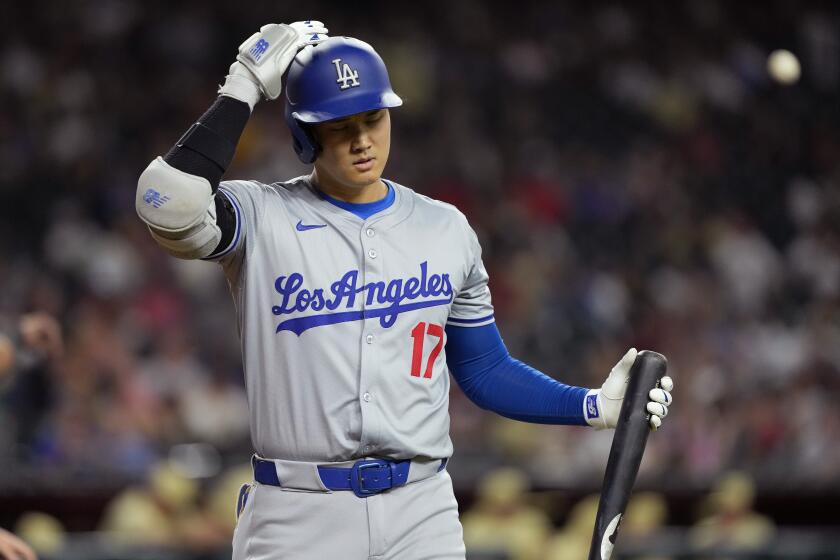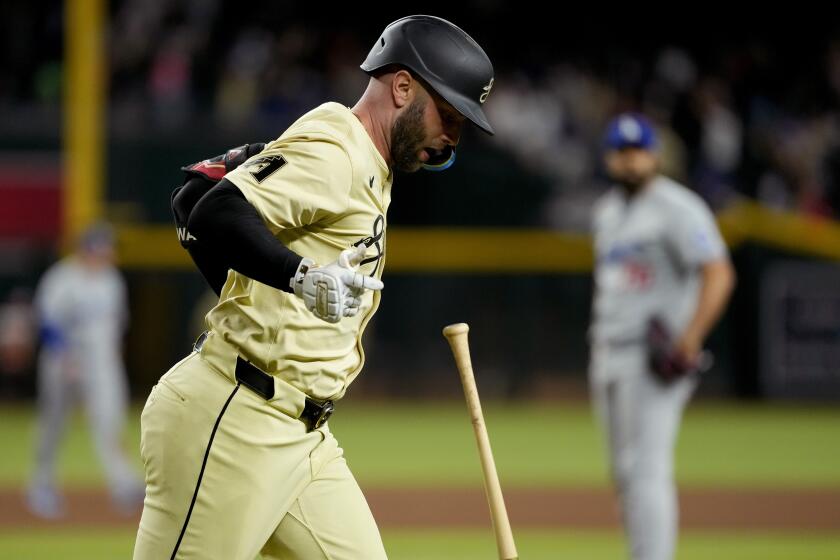Negotiations Go Extra Innings
Donald Fehr walked into the baseball commissioner’s office at 12:30 p.m. Saturday. About 17 1/2 hours later, the union chief walked out with a deal.
Just like that, baseball went from war to peace.
The agreement was announced like other big peace treaties, at Versailles--the Versailles Room of the Helmsley Palace hotel. And when it was over, Fehr was asked if the fight was worth it for just 15 players.
“Sure it was worth it for 15 players,” he said, perspiration dripping from his unshaven cheek. “If the union is going to do its job, the players have to support each other. . . . Even if it’s only a few people in a small category.”
The union won salary arbitration for about a sixth of the players in the two- to three-year group. For months, owners refused to move off their position that they would not go below the three-year level.
Last week, management gave a hint of change when it asked the union to make computer projections of different formulas. But its proposal on Friday made no mention of the two- to three-year players.
On Sunday, the union came back with a proposal that would make 25% of those players eligible in 1990 and set a sliding scale for the rest of the contract, with 40% of those players eligible in 1992.
The Player Relations Committee--Bug Selig of Milwaukee, Jerry Reinsdorf of the Chicago White Sox, Carl Pohlad of Minnesota, Fred Wilpon of the New York Mets, John McMullen of Houston and Fred Kuhlmann of St. Louis--caucused for about four hours. Fehr went for a walk around mid-town Manhattan with his brother while the union awaited a response.
At 5:30 p.m., the committee for the first time moved off its position that no two-year players should be eligible, offering 10% of that class each season.
“Within minutes we came back,” union lawyer Lauren Rich said. They offered 18% in the first year, 21% in the second, 33% in the third.
The committee, conveying its decisions through Deputy Commissioner Stephen Greenberg, came back and offered 12% a year. The union countered at 20% and again there was a long debate while owners deliberated.
“We were up there I don’t know how long,” Fehr said later, “and there was maybe one hour of negotiations.”
About 10 p.m., the committee meeting broke and Greenberg went with Fehr into the conference room next to Vincent’s office. Within half an hour, they agreed to 17%. But neither would say who suggested the figure.
“It sprung forth as if from Zeus’ head,” Greenberg said.
It was about 10:30 p.m., and the other details of the agreement had to be written down. Word of the settlement leaked out in the next hour and at 1:18 a.m., Vincent walked into the Versailles Room with American League President Bobby Brown and most of the committee to make the announcement.
In 1985, the sides hurriedly patched together a memorandum of settlement and then couldn’t agree on what they had agreed on. Because of that, the agreement was never signed.
So, as Vincent and Greenberg went off to a restaurant for a late meal, union lawyers went back to the office and spent the night typing and faxing drafts to the commissioner’s office, where Fehr remained. The fax machine at the committee’s office broke down, and the copier at the union broke too.
As dawn broke over Manhattan, the lawyers finished dotting the “i’s” and crossing the “t’s.”
At 5:54 a.m., Fehr and O’Connor walked into the committee’s conference room to sign the inch-high document. Then they walked across the street to the Versailles Room to say their work was complete.
“Based on what happened in 1985,” Fehr said, “no one on our side was going to walk out of there until it was done.”
More to Read
Are you a true-blue fan?
Get our Dodgers Dugout newsletter for insights, news and much more.
You may occasionally receive promotional content from the Los Angeles Times.






